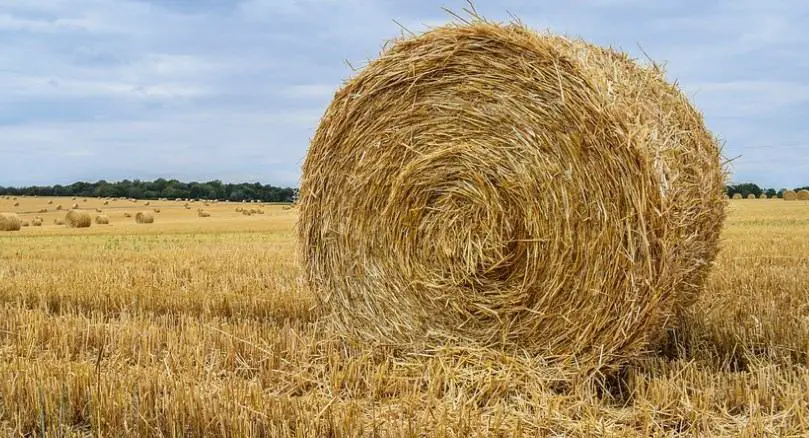No products in the cart.
Field
What is Hay made of? Comparison between Hay & Straw
To many people, hay simply means dry grass which is a main source of food for animal. But no, it is much more than that.
So, what is hay made of? How to make hay which can keep its best quality and rich in nutritional value for the animal? Hay is straw, isn’t it? This article has all the answers.
*This post may have affiliate links, which means I may receive commissions if you choose to purchase through links I provide (at no extra cost to you). As an Amazon Associate I earn from qualifying purchases. Please read my disclaimer for additional details.
What is hay made of?
Commonly, hay is a mixture of grasses such as ryegrass, timothy, brome, fescue, Bermuda grass, orchard grass, and other species. Also, hay is a composition of legumes such as alfalfa and clovers. Legumes are cut pre-bloom.
Sometimes, other pasture forbs are also mixed in hay. As certain forbs contain toxic to some animals, mixing these forbs is not necessary.
Occasionally, oat, barley, and wheat are cut green and made into hay for animal fodder. Actually, they are often used like straw which is mainly used for animal bedding. Although straw is a source of dietary fiber, its nutritional value is much lower.
The leaf and seed in hay determines its quality. They have more nutritional value than the stems in straw do. Hay is ideally harvested when the seed heads are not quite ripe and the leaf reaches its maximum size.
You should pay attention to weather conditions when harvesting hay. In drought conditions, seed and leaf are stunted. Harvested hay will have high ratio of dry stem which gives very low nutritional value. If harvested in wet weather, hay can spoil in the field before being baled.
How to make hay & hay bales?
In the early days, people cut grass by a scythe and raked it by a wooden hand rake. This has steadily changed over the years to a tractor-powered process.
There are 4 basic steps of making hay: cutting, tedding, raking, and baling.
Cutting or mowing hay
The first time cutting hay depends on the stage of plant growth and weather condition.
It is important because it will allow the hay to dry out in the baling process later. Hence, it is better to have a look at weather forecast, and have at least a few dry days before cutting.
To cut hay, you can use a sickle mower. This was one of the earliest mechanical mowers that is still manufactured nowadays. It comprises of a five-seven feet long bar with cutters along the bar edge. Although it works acceptably with small tractors, it is easy to clog and cannot crimp to speed up the drying process.
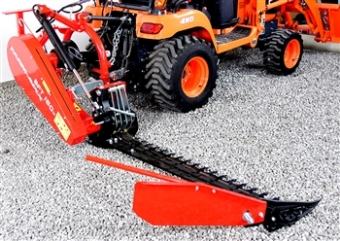
The rotary disc mower is the most common one. It can operate through thick hay with higher speed. Its name comes from the rotary discs which are placed in parallel along the mower. The hay will pass through rollers that crush the stems. This lets the hay dry more quickly.
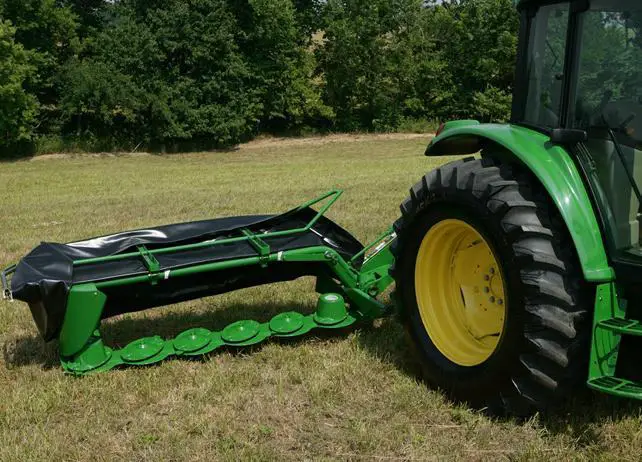
Check now: Top 3 Best Finish Mowers on the Market
Tedding
After cutting, hay needs time to dry so that hay bales will not get high moisture content. Tedding refers to the process of making all parts of the hay dry. From the bottom, the windrow will be moved up to the top in order to maximize air circulation.
There is something to consider before choosing a tedder such as the type of hay, humidity, and weather outlook. If hay is cut in the morning, tedding can be done in late afternoon on the same day or the following day.
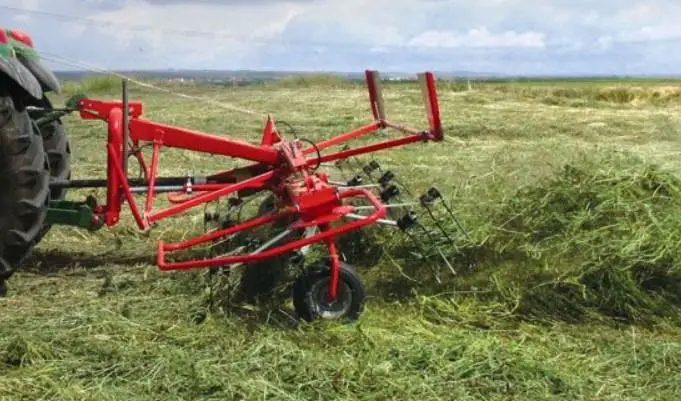
Undoubtedly, wet bales can spoil the hay but if it is dried too much, the leaves of hay (such as alfalfa or clover) can be damaged.
Read more: Did you know Salting hay to storage?
Raking
This is the final stage of the drying process. Among several types of rake, wheel rake and rotary rake are more popular.
Wheel rakes appeared long time ago. Now, it comes in many configurations and there are a number of wheels on the rake. It can operate without hydraulics or PTO power. Also, it is cheaper comparing to other rakes.
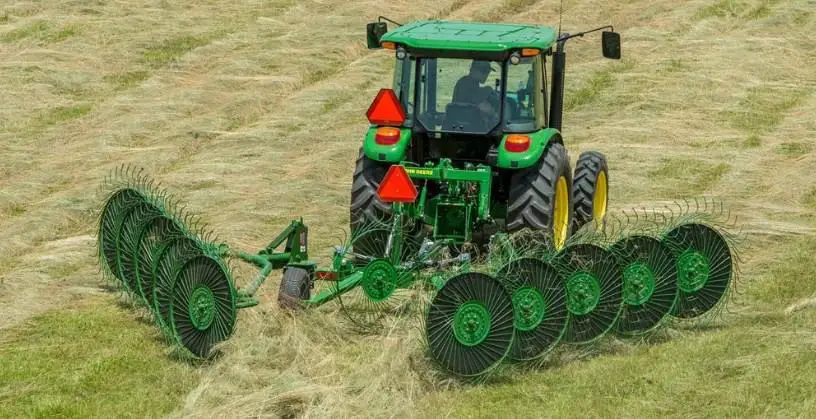
However, if you do not tension it correctly, it tends to pull soil into the windrow. This will lower the hay quality.
Wheel rakes are a common with farmers and ranchers as its price is low and is easy to find in the used equipment market.
Rotary rakes came from Europe and are now popular in the US market. It is more expensive than wheel rakes. While wheel rakes are built for dry hay only, the rotary rakes can handle wet or heavy hay as well.
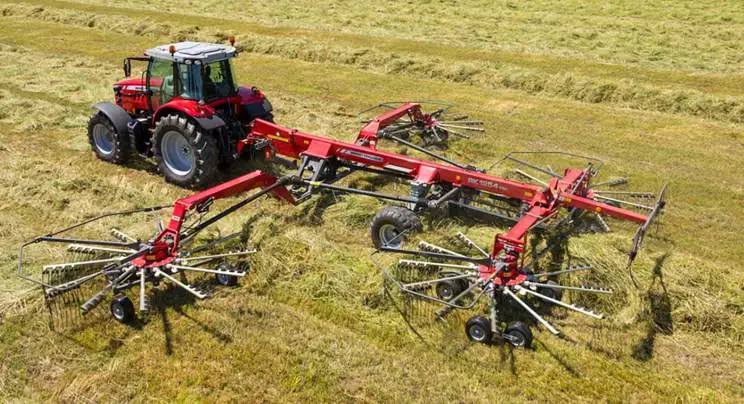
Rotary rakes can make fluffy and steady windrows. Additionally, it leaves the least amount of soil in the windrow, which makes higher hay quality.
What is more, many rotary rakes models can cover up to 60 feet in a single raking, so they are totally suitable for large hay producer.
Baling hay
Baling is the final step in processing hay. Normally, there are 2 types of bale: square bales and round bales.
To make square shape, hay is lifted into the baler’s reel. After that, the reel is packed into a bale chamber along the side of the baler. A plunger and a knife will move back and forth in front of the bale chamber.
A flywheel will force to fill and help pack the bale into the chamber. When the bale length is appropriate, it will be ejected from the chamber after wrapped around by a twine.
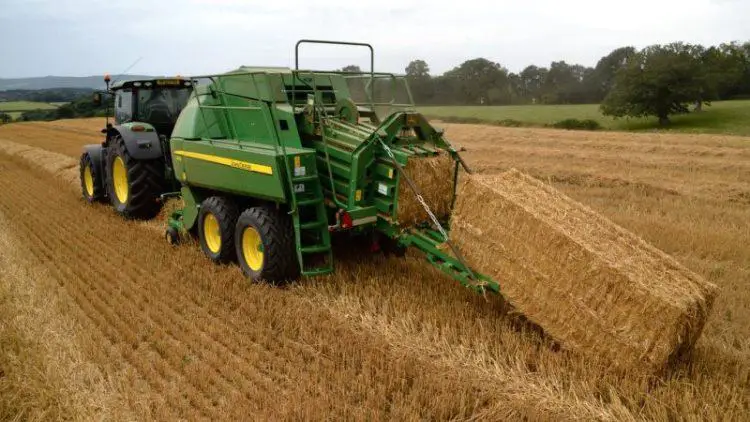
Square bales are different in size according to the baler. Normally, they are 15 inches wide – 18 inches high – 40 inches long. A square bale is about 40 to 60 pounds depending on the sort of hay and its moisture.
To make round bales, hay is pulled into the baler, which will wind or roll the hay until they reach the size that is set in advance. At the same time, a twine is wrapped around the bale to keep it in shape.
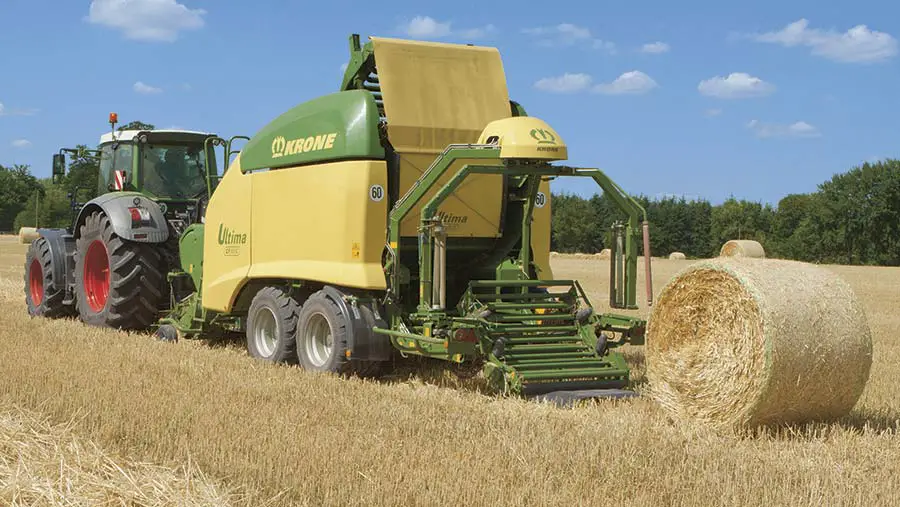
Then, the bale will be dropped out from the baler’s rear and moved by a tractor loader bale spear. The round bale can shed water naturally, but to add more moisture protection, you can also use a plastic sheeting to wrap it.
A round bale can range from 800 pounds (4 to 5 feet) to 1,500 pounds (5 to 6 feet).
Of course each type has its specific benefits related to users’ needs and sort of livestock that being fed.
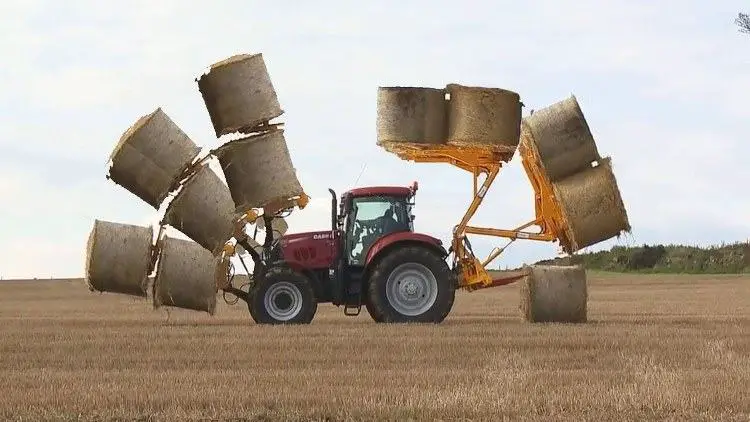
Square bale is quite easier to handle and store, so it is beneficial for farmers with fewer animals. In contrast, the round one is more efficient for larger farming operations because it is packed densely, and can shed water on its own, which helps to maintain its quality longer.
Horse owners often shows their favor in square bales since the handling in stalls job is easier. Also, if there is just one or a few horses, using square bale is more economical.
Meanwhile, cattle producers choose the round bales because the hauling job is gentle. With a tractor and a bale fork, a person himself can easily move lots of hay to feed numerous animal.
Comparison between hay & straw
Many people think hay and straw are one. Well, actually these two term are different.
Similarities
Both hay and straw are agriculture products which are made from plants. They can be cut and formed into round or square bales.
Differences
There are several differences between straw and hay which are presented in the table below.
| Straw | Hay |
| Is a by-product of the grain harvest, such as wheat, oats and barley. | Is legumes such as alfalfa and clover, or grasses such as timothy, oat, fescue and Bermuda grass. Most of the time, seeds are still intact in a hay bale |
| Yellow or golden | Green, or light yellow |
| The hollow stalks leftover after being threshed are dried, then cut and formed into bales.
Almost no moisture content in straw bales. |
Plants are harvested when alive and usually cut before the seed matures, then dried.
Sometimes, there is too much moisture content in hay bales which can lead to firer because of the increased heat. |
| Not much nutritional value.
Not usually fed to livestock. |
Good to feed livestock.
Certain types of hay can be fed to animals. Some contain more protein and carbohydrates to fuel hard working horse. |
| Can also be used to:
– make nice beds for animal – mulch the plants and keep the soil moist. – suppress weeds and compost naturally into the garden over time. – package things, produce paper, biofuels. |
Be used to feed horses, cows, sheep, goats, and other animals especially when fresh pasture is not available.
|
Conclusion
So, now if someone asks you “what is hay made of”, you will not tell them that “dry grass”, won’t you? Remember to harvest hay in the right time to get the highest nutritional value, and easy for storage later.
